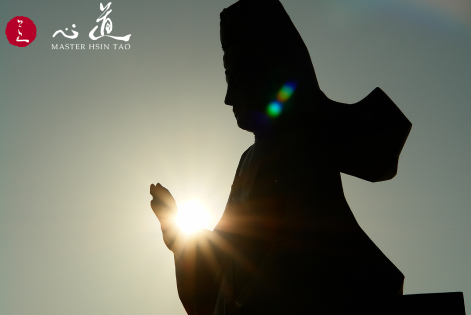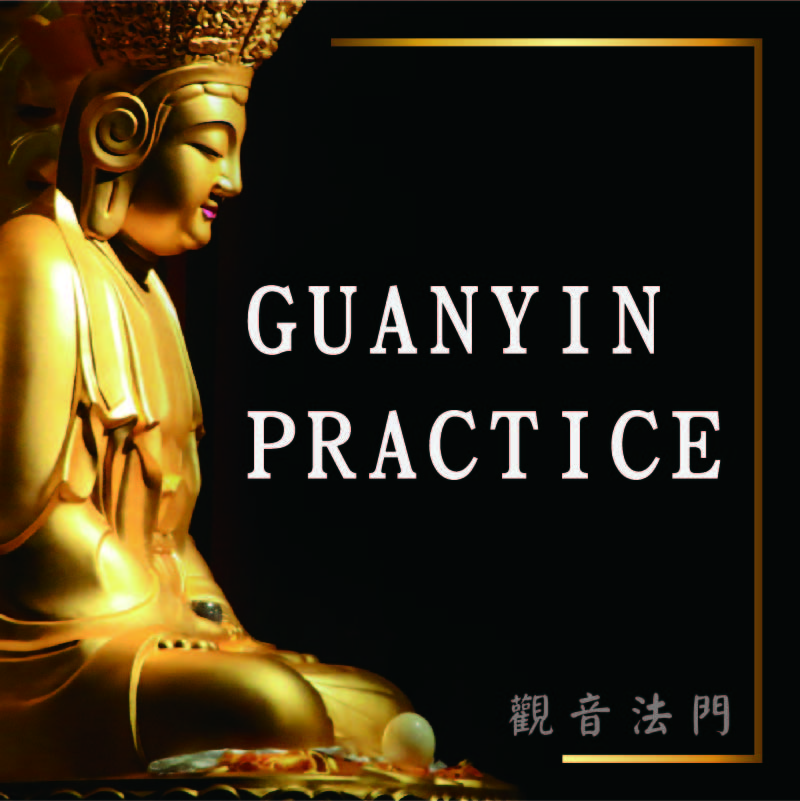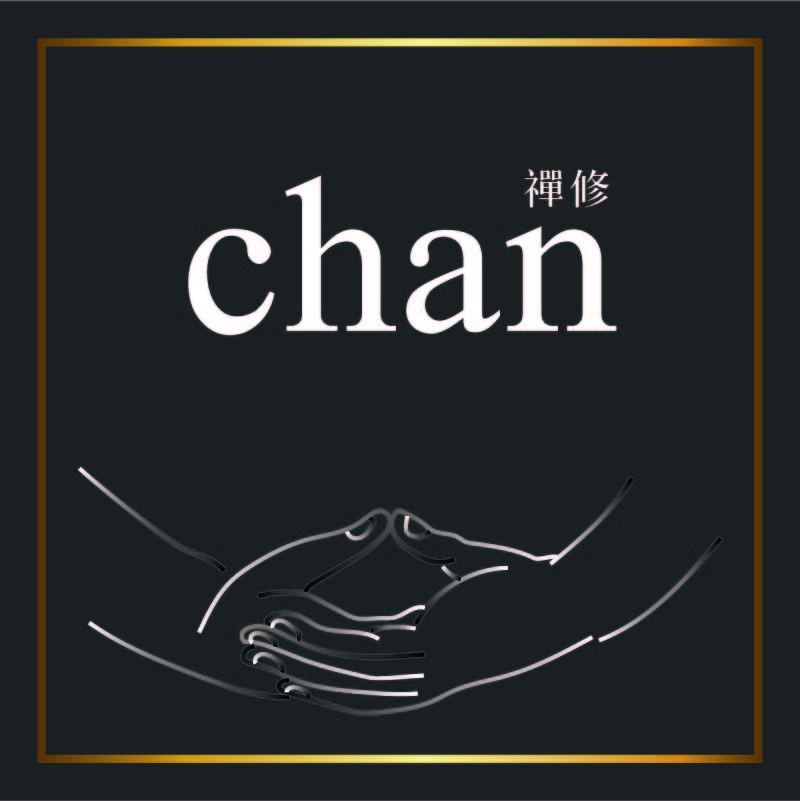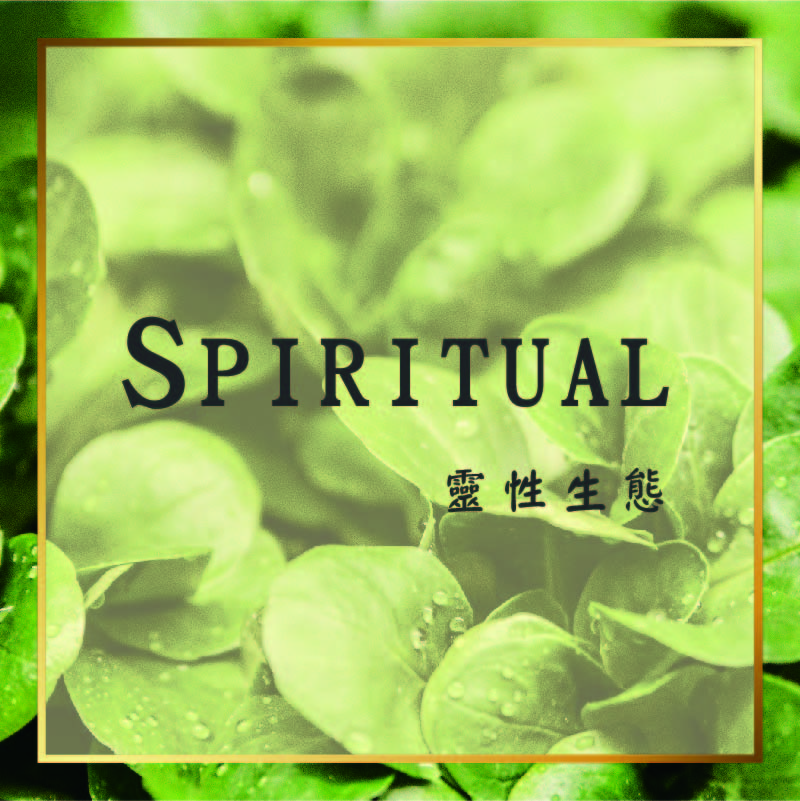
Be the Thousand Arms for Sentient Beings
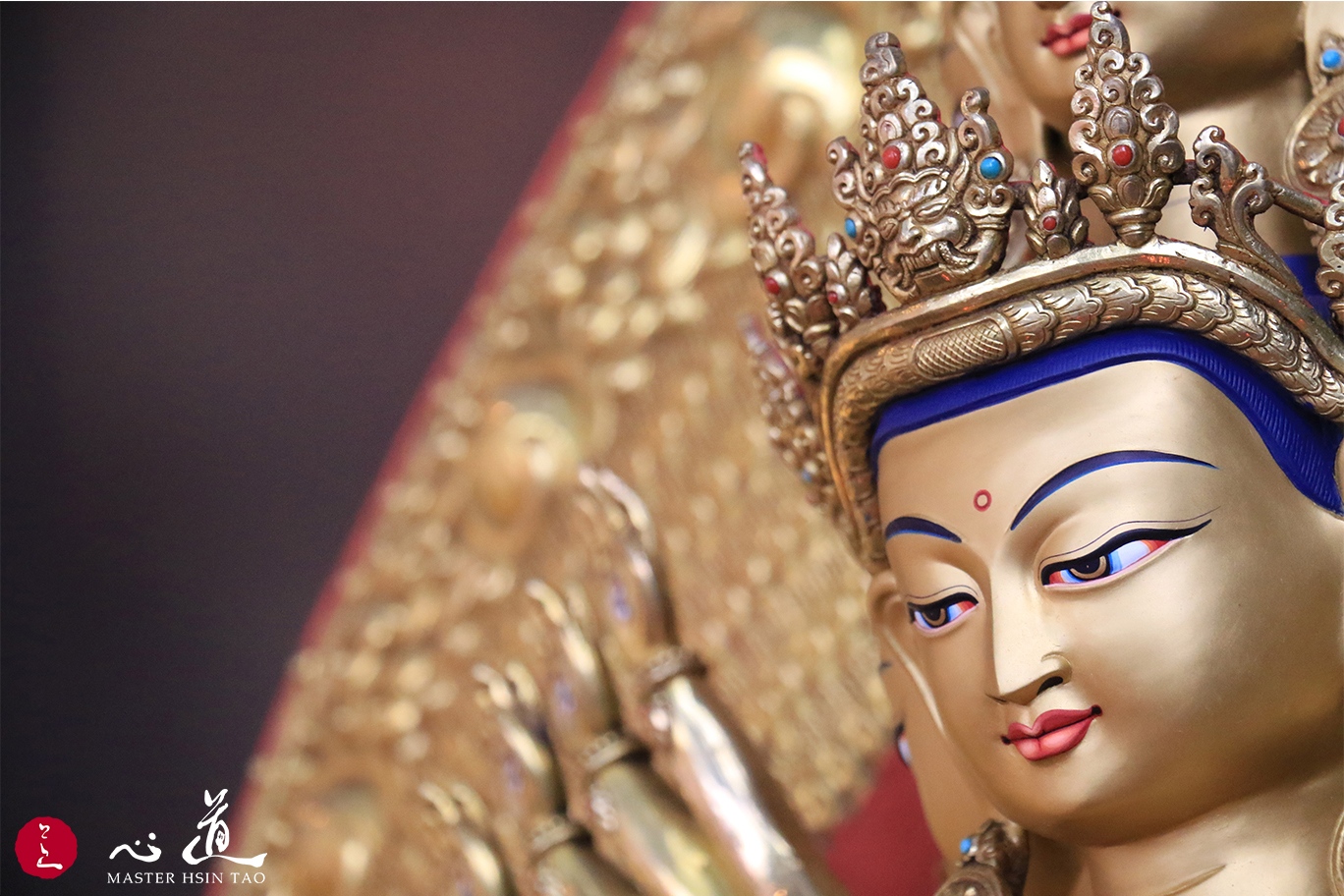 Guan Yin (Avalokitshvara) has made the aspiration, “liberate all sentient beings, then to attain the ultimate enlightenment”. She has been fulfilling this aspiration since. Once when practicing the bodhisattva path, she saw the rescued beings turning back to activi-ties of the three poisons (greed, aversion, ignorance) and fell into the cyclic reincarnation of the six realms again. She had a regressive thought of stop helping any being again. When this idea flashed, her body broke into a thousand pieces and her head into eleven.
Guan Yin (Avalokitshvara) has made the aspiration, “liberate all sentient beings, then to attain the ultimate enlightenment”. She has been fulfilling this aspiration since. Once when practicing the bodhisattva path, she saw the rescued beings turning back to activi-ties of the three poisons (greed, aversion, ignorance) and fell into the cyclic reincarnation of the six realms again. She had a regressive thought of stop helping any being again. When this idea flashed, her body broke into a thousand pieces and her head into eleven.
Amitabha, the principal teacher of Guan Yin learned her despair and came to this diligent disciple. He resembled a thousand pieces into thousand arms so Guan Yin has a greater strength to liberate beings. Amitabha then resides on top of Guan Yin as encouragement of not forgetting her aspiration and keep exerting.
 Then, the Thousand Rays King Stillness Tathagata conferred the Great Compassion Mantra (Long Dharani) to Guan Yin, who has benefitted countless beings with the dharani. When Guan Yin heard the mantra, she immediately attained the eighth stage of a bodhisattva, Immoveable, from the first stage of Very Joyful. Guan Yin has helped sentient beings with the Great Compassion Mantra for an unfathomable time. Another short, heart mantra of Guan Yin, “om mani padme hum”, was also given by Amitabha. What’s the meaning of “om mani padme hum”? It means, “the blossoming of our lotus mind”. In other words, it is to see our nature. If we recite this mantra often, we can rediscover our treasure of mind, to reveal such preciousness.
Then, the Thousand Rays King Stillness Tathagata conferred the Great Compassion Mantra (Long Dharani) to Guan Yin, who has benefitted countless beings with the dharani. When Guan Yin heard the mantra, she immediately attained the eighth stage of a bodhisattva, Immoveable, from the first stage of Very Joyful. Guan Yin has helped sentient beings with the Great Compassion Mantra for an unfathomable time. Another short, heart mantra of Guan Yin, “om mani padme hum”, was also given by Amitabha. What’s the meaning of “om mani padme hum”? It means, “the blossoming of our lotus mind”. In other words, it is to see our nature. If we recite this mantra often, we can rediscover our treasure of mind, to reveal such preciousness.
The mind is the root of all Buddhas, the eye of Buddhas. It is also the pure land of Infinite Life and Boundless Light. With the long dharani of the Great Compassion Mantra, all wishes can be fulfilled. The short heart mantra, “om mani padme hum”, enables us to see our nature. As we’ve learned both mantras, we’re the manifestation of Guan Yin. We must respond to suffering like Guan Yin and answer to wishes incessantly. Practice the mantra and Dharma Door of Guan Yin despite the challenges we’d face. These challenges attribute to one’s attainment of Buddhahood, fulfillment of the path, and the accom-plishment. Being supported by the aspiration of Guan Yin, challenges can turn into ener-gy. Our life would become just like Guan Yin’s, living by aspiration.


